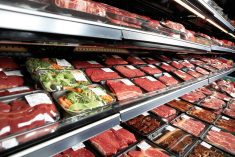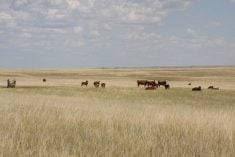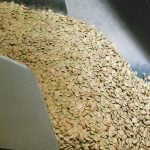The bull market that is driving up food prices has been a boon for prairie farmers but has had a more chilling effect in other parts of the world.
The Tunisian regime was overthrown by protests inspired in part by anger over rising food prices.
The Egyptian government of Hosni Mubarak was still in power Jan. 31 but facing large protests demanding an end to his autocracy. Those protests were also partly inspired by escalating food prices.
Egypt is one of the world’s biggest wheat importers.
Read Also

August rain welcome, but offered limited relief
Increased precipitation in August aids farmers prior to harvest in southern prairies of Canada.
Algeria, a neighbor of Tunisia, is reported to have sped up purchases of durum to head off similar public unrest.
These types of bull markets in basic foodstuffs sometimes do the opposite of what orthodox economic theory suggests, said Brian Oleson, head of agribusiness and agricultural economics at the University of Manitoba.
Instead of high prices rationing demand, they provoke a panicked reaction that drives prices even higher.
“Countries that can afford it … actually buy more because they’re rushing to get ahead of disaster,” he said.
That may be part of the reason China has bought so many soybeans, he said, because it doesn’t want to face a situation like that plaguing the governments of North Africa.
Countries that are poorer than those in North Africa often don’t have the money to buy suddenly expensive crops, said Canadian Foodgrains Bank executive director Jim Cornelius.
As a result, hunger is a looming possibility.
“We’re hearing from people on the ground that a fairly rapid increase in staple food prices is putting a lot of stress on households,” he said.
“The price increase has been transmitted to markets around the world fairly quickly.”
Oleson said some major sources of crop demand have appeared in the past five years, but the market is only slowly adapting to their reality.
China began buying major amounts of world crops on a regular basis a few years ago. At around the same time, U.S. ethanol production began consuming a significant proportion of the U.S. corn crop, which is now one-third of total U.S. corn production.
The increased demand means seemingly large supplies can quickly dwindle and set off a surge in prices as buyers scramble to ensure they have enough.
That appears to be the case now, with a stealth bull market appearing in a year in which few expected to see a surge in prices and shor tages appearing.
“It’s amazing how stealthily this market crept up on us,” said Brian Oleson, head of agribusiness and agricultural economics at the University of Manitoba.
Few people last spring expected strong crop or meat prices in the coming year.
“Wheat was all alone rising and bullish (after investment funds covered short positions), then suddenly corn starts tightening up bit by bit and soybeans start tightening up bit by bit, and suddenly we’re in this bull market,” Oleson said.
“It just sort of crept in and now we’re sitting here with these high prices.”















